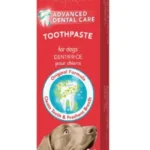Lysol, a popular cleaning product, is often found in households as an odor-eliminator and germ-killer. But how safe is it for our four-legged friends? If not, how long after spraying Lysol is it safe for pets? The answer lies in understanding its active ingredients and their effects on humans and animals. Here are answers to this and more questions you may have about Lysol.
What is Lysol, and Why Do Dog Owners Use It?
Lysol is a renowned brand of cleaning and disinfecting products that has gained significant traction among homeowners due to its effectiveness in eliminating odors and killing harmful germs. Lysol disinfectant spray, in particular, is highly favored for its ability to combat a wide array of viruses and bacteria, offering a layer of protection to the home environment.
For pet owners, maintaining a clean living space is not just about cleanliness; it’s about health. Pets, much like humans, can fall prey to various diseases from pathogens lurking in their surroundings.
Lysol serves as a reliable tool in this respect, helping pet owners ensure a safer, more sanitary home for their furry companions. However, while its germ-killing capacity is unmistakable, it’s essential to ponder the potential implications for our pets’ health. Hence, understanding the safety practices regarding Lysol usage around pets is important.
Main Ingredients in Lysol
Lysol is formulated with several ingredients that contribute to its disinfecting properties. The primary active ingredient in many Lysol cleaning products is Benzalkonium Chloride. Benzalkonium Chloride is a potent antimicrobial agent against many bacteria, fungi, and viruses.
In addition, some Lysol products contain secondary active ingredients like Ethanol/SD Alcohol or Isopropyl Alcohol, which serve as antiseptic and disinfection agents. While this compound effectively keeps our homes clean, it can be toxic to pets if ingested or contacted directly. With this in mind, exercise great caution when using Lysol around pets.
Inactive ingredients in Lysol products can include water, fragrance, and propellant. All these ingredients work together to make Lysol a powerful odor eliminator and germ killer. Understanding these ingredients provides insight into why Lysol is effective in maintaining a clean home and potentially toxic to pets.
But the question remains: “How long after spraying Lysol is it safe for pets?”
After spraying Lysol, it’s essential to wait until the product has dried completely before allowing your pet back into the space. Typically, this takes about 30 minutes, but for a thorough home clean using Lysol, wait at least 2 hours. This period allows the Lysol disinfectant spray to evaporate completely, reducing the risk to your pets.
Is Lysol pet-safe? Lysol is safe for pets to be around in small amounts once dried. However, it’s best to keep your pets away during the spraying process and ensure they don’t ingest the product. If, by chance, your pet does come into contact with a freshly sprayed area, wash the area with soap and water immediately.
Lysol isn’t the only product that can be toxic to pets. Many cleaning products contain isopropyl alcohol or similar substances. Therefore, the same precautions should be taken with these products.
If you find keeping your pets away from these products difficult or are concerned about the risks, there are safe alternatives. Opt for pet-friendly cleaning products that are free from toxins. These products can keep your home clean without harming your furry friends.
Applying Lysol to a Dog’s Bedding: Is it Safe?
It’s natural to want to keep your pet’s bed clean and free of germs, especially in a multi-pet household. However, directly spraying Lysol on a dog’s bed is not recommended. While Lysol is a powerful disinfectant and odor eliminator, its active ingredients may prove harmful if your dog comes into contact with the wet product or ingests it.
If you choose to use Lysol to clean your dog’s bed, allow it to dry fully before letting your dog use the bed again. Better yet, consider using pet-friendly cleaners that are safe for animals. These products are formulated without the toxic ingredients found in common household cleaners, ensuring a clean environment for your pets without the associated risks.
My Dog Smells Like Lysol. What Do I Do?
If your dog smells Lysol, monitor them for any signs of discomfort or distress. See if they are coughing, sneezing, excessive drooling, or lethargic. If any of these symptoms occur, contact your vet immediately.
Ensure that Lysol and similar products are stored safely out of your dog’s reach. To prevent any accidental inhalation or ingestion in the future, use pet-friendly cleaning alternatives, especially in areas of your home where your dog spends a lot of time. Also, always ensure the sprayed area is completely dry before allowing your dog back into that space.
Does Lysol Help Eliminate Odors?
Yes, Lysol is not just a disinfectant but also an effective odor eliminator. It kills the bacteria that cause unpleasant smells rather than simply masking them. Whether it’s musty linens, cigarette smoke, or pet odors, Lysol can help refresh your home and eliminate those unwanted scents. Nevertheless, while it’s a powerful tool in maintaining a clean, fresh-smelling home, it’s vital to remember the potential risks to pets. Remember to use the product responsibly.
Is Dettol Disinfectant Safe for Animals?
Dettol Disinfectant, like Lysol, is a popular cleaning product known for its germ-killing properties. However, regarding its safety around animals, you must exercise caution. Dettol contains chloroxylenol, which, while effective in disinfection, can be toxic to many animals, including cats and dogs, if they ingest or absorb it through the skin.
Keep pets away from areas where Dettol has been recently used until the product is completely dry. It takes around 2 hours to dry, but it helps reduce the risk. If your pet comes into contact with Dettol, immediately wash the area with soap and water and consult a veterinary professional if any signs of distress appear.
Is Lysol Still Harmful After It Dries?
No. Lysol is safe for pets after it has dried completely. The chemicals within Lysol that can be harmful to pets, such as benzalkonium chloride, are neutralized when dry. The drying process typically takes about 30 minutes to 2 hours. Once the area sprayed with Lysol has thoroughly dried, the risk to pets significantly reduces.
Exploring Pet-Friendly Substitutes for Lysol
There are numerous pet-safe alternatives to Lysol available in the market today. Vinegar, baking soda, and essential oils can be natural disinfectants and odor eliminators. Plenty of commercial cleaning products are specifically formulated to be non-toxic and safe for pets.
Brands such as Better Life, Seventh Generation, and ECOS offer a range of pet-friendly cleaning products. These substitutes provide the same cleanliness and freshness as Lysol, minus the harmful chemicals. They are also popular for their non-toxic formulas.
You can also use natural options like white vinegar to get rid of the dog smell. Mix equal parts of white vinegar and water in a spray bottle to clean surfaces. Always remember to choose cleaning products wisely, prioritizing not just cleanliness but also the safety of your furry companions.
Can I Use Clorox Wipes?
Clorox wipes contain chemicals that can be harmful if ingested or come in contact with your dog’s skin. Always allow surfaces to dry completely before allowing your dog to be near them.
In conclusion, the answer to how long after spraying Lysol is it safe for pets depends on the level of cleaning. Wait until the surface is completely dry to allow dogs in. While Lysol can be useful in keeping our homes germ-free, caution must be exercised around pets. Lysol is safe for pets once it has completely dried, but it can be toxic to cats and other animals if they come into direct contact with the product before it’s dry. Always opt for pet-friendly cleaning products when possible to keep your pet safe.





